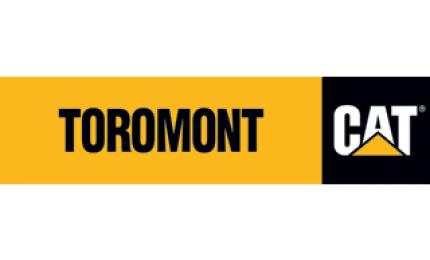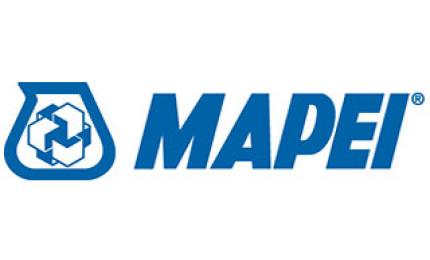La police d’assurance de chantier (Builder’s Risks Policy) couvre-t-elle tout l’immeuble ou seulement la portion qui fait l’objet de travaux ?
La question de savoir si l'assurance chantier vise la réparation de dommages causés à une structure existante qui n’était pas visée par les travaux de construction pour lesquels la police d’assurance a été contractée a été présentée aux tribunaux québécois récemment, dans l’affaire Québec (Ville de)c. CFG Construction inc.1 Les décisions rendues dans le cadre de cette affaire ne permettent toutefois pas de conclure sur cette question en droit québécois afin de savoir quels dommages sont couverts (ceux causés à la structure existante ou seuls ceux causés à la portion rénovée).
Les propriétaires et entrepreneurs impliqués dans un projet de construction ne visant qu’une portion d’un immeuble devraient dans ce contexte s’interroger sur cette question au moment de contracter une assurance chantier et s’informer quant à l’étendue de la couverture.
Dans l’affaire susmentionnée, bien que la Cour supérieure (la Cour de première instance) ait tranché clairement en 2013 en indiquant que l’assurance chantier visait la réparation de dommages à la structure existante compte tenu du principe qui prévaut en common lawet qui a été énoncé dans la décision Medicine Hat Collegev. Starks Plumbing & Heating Ltd.2 par la Cour de l’Alberta, la Cour d’appel du Québec a jugé en 2015 que cette décision de l’Alberta ne peut s’appliquer intégralement au Québec sans effectuer une analyse plus approfondie propre au contexte du droit québécois, car le Code civil du Québec contient des dispositions particulières sur la question de l'intérêt assurable. Les tribunaux québécois n’ont toutefois pas encore eu l’occasion d’effectuer cette analyse plus approfondie.
Dégageons tout de même le principe enseigné par la décision Medicine Hat Collegev. Starks Plumbing & Heating Ltd.3, à laquelle réfère la Cour d’appel du Québec. Dans cette affaire, le donneur d’ouvrage Medicine Hat College désirait procéder à l’agrandissement et à la rénovation de certains de ses bâtiments. Le contrat octroyé à l’entrepreneur général Wolfe Construction lui imposait de souscrire à une police d’assurance chantier (Builder’s Risk Policy).
Dans le cadre des travaux de rénovation, l’entrepreneur général Wolfe Construction avait fait affaire avec le sous-traitant Starks. Ce dernier devait démolir et raccorder une nouvelle conduite de gaz naturel. Lors du branchement de la nouvelle conduite, une explosion était survenue et avait endommagé la salle mécanique.
La Cour de l’Alberta devait déterminer si la perte résultant de l’explosion était couverte par l’assurance chantier puisqu’il s’agissait de dommages au bâtiment existant et non à la nouvelle construction.
L’honorable juge McDonald a jugé que l’assurance chantier (voir la clause ci-dessous reproduite au paragraphe 36) couvrait la structure préexistante et pas uniquement les nouvelles constructions (voir la conclusion au paragraphe 63) :
[36] The Builder’s Risk Policy in Part 1, Builder’s Risk Broad Form provides as follows in section 2 thereof:
This form, except as provided in this form, insures the following property at the project site for the amount of insurance specified in the Schedule of Part I for the Project Site:
(a) property in course of construction, installation, reconstruction or repair other than property described in 2(b)
(i) owned by the insured;
[63] In conclusion, therefore, I hold that on the facts of this case, the loss in question is covered by the Builders’ Risk Policy. In other words, the Plaintiff’s penthouse mechanical room is included in the phrase “property in the course of construction, installation, reconstruction or repair”.
Au regard de ce qui précède et dans l’attente d’une décision émanant des tribunaux québécois sur le sujet, nous recommandons aux propriétaires et entrepreneurs de vérifier l’étendue de la police d’assurance afin de s’assurer que les dommages causés à la construction existante, le cas échéant, seront couverts par une police d’assurance. En effet, nous notons d’une part que les tribunaux québécois n’ont pas clairement tranché la question à ce jour et d’autre part que la décision Medicine Hat, à laquelle la Cour d’appel du Québec a référé, a été subséquemment distinguée par la Cour supérieure de l’Ontario en juin 2015 dans l’affaire William Osler Health Centre v. Compass Construction et al4, où la Cour a jugé que les dommages causés à la construction existante d’un hôpital n’étaient pas couverts par la police d’assurance contractée par l’entrepreneur général Compass5.
1 Arrêt de la Cour d’appel du Québec : Québec (Ville de)c. CFG Construction inc., J.E. 2015-392 (C.A.)
Décision de la Cour supérieure : Québec (Ville de)c. Génitech Entrepreneur général inc., J.E. 2013-2097 (C.S.)
2 Medicine Hat Collegev. Starks Plumbing & Heating Ltd, 2007 ABQB 691
3 Id.
4 William Osler Health Centrev. Compass Construction et al, 2015 ONSC 3959.
5 Id., par. 38-45 :
[38] For all of the reasons argued by Compass, it would strain the interpretation of both the IBC 4042 and the contract between Compass and the Hospital if this court were to find that “property in the course of construction” included the entire Hospital. The covenant to insure covers the Project, but not the rest of the Hospital.
[39] On a basic level, if Compass’ insurance coverage were intended to insure the entire Hospital as a “property in the course of construction,” the premiums and coverage limits stipulated in the covenant to insure would be much higher – they would more closely resemble the Hospital’s own insurance coverage. It thus stands to reason that the covenant to insure was not intended by either party to cover damage done to the entire Hospital.
[40] This interpretation is supported by the language used in the IBC 4042, which differentiates between the “property insured” and the “Project site”: This Form, except as provided in this Form, insures the following property at the “Project site” for the amount of insurance specified on the “Declarations Page” for the “Project Site”:
(a) property in the course of construction, installation, reconstruction or repair other than the property described in 2(b) […]
[41] Per the IBC 4042’s definitions section, “project site” means “the site of a project described on the “Declarations Page.” This definition clearly differentiates between a project and the location at which it takes place, i.e. between the kitchen renovation project and the rest of the Hospital.
[42] The IBC 4042 also refers to the “property insured” in its indemnification provision:
1. In the event that any of the property insured be lost or damaged by the perils insured against, the Insurer will indemnify the insured against the direct loss so caused to an amount not exceeding whichever is the least of:
(a) the “replacement cost” value of the property at the time of loss or damage but in no event to exceed the amount necessarily expended for replacement;
(b) the interest of the Insured in the property; […]
[43] This language makes it clear that the policy is intended to cover the “interest of the Insured” in the “property insured” at the Project Site only. The Alberta Court of Queen’s Bench held in Medicine Hat that contractors have an insurable interest in an existing structure (or, using the terminology in this case, the “Project Site”). Whether or not this is true, it does not change the clear language of the policy by which it is stipulated that only the Insured’s interest in the “property insured” will be covered by the policy. Any insurable interest the insured has in the Project Site as a whole, or property adjacent to the Place of the Work, is not insured by the all-risks builders’ policy.
[44] Support for this position is found in the excerpts from the Canadian Construction Documents
Committee’s Guide to Construction Insurance relied upon by Compass. In this Guide, the CCDC advises contracting parties to ensure the risks of damage to existing structures are addressed with additional insurance coverage. This supports the argument that the covenant to insure and the all-risks builders’policy obtained in fulfillment of that covenant were not intended to cover damage to existing property. Neither party seems to have followed the advice to obtain additional insurance coverage. However, the solution to this oversight is not simply to read broader coverage into the policy that was obtained.
[45] For the reasons above, I find Compass’ cross-claim against Black Creek for damages to the Hospital outside of the kitchen is not barred by the covenant to insure.
Pour toute question, n’hésitez pas à communiquer Me Andréanne Sansoucy au 514 871-5435.
Cet article est paru dans l’édition du mardi 29 mars 2016 du journal Constructo. Pour un accès privilégié à l’ensemble des contenus et avant-projets publiés par Constructo, abonnez-vous !






















